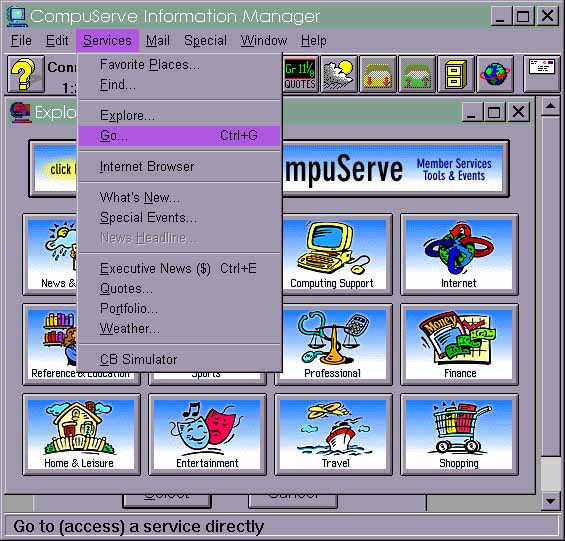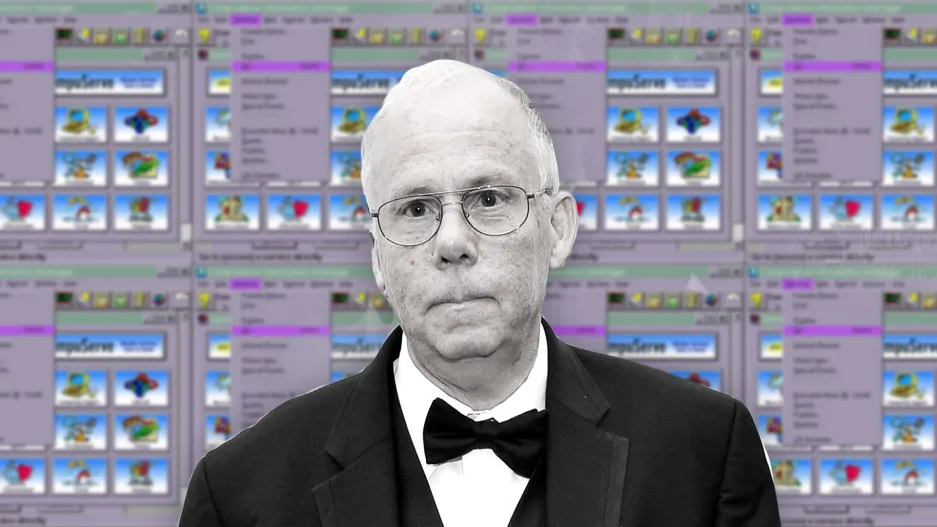Even if you’ve never heard of Steve Wilhite, the amount of time you’ve spent staring at computer graphics powered by technology he created may be incalculable.
Wilhite, who died from complications of COVID-19 at age 74 on March 14, is the man who gave us a graphics file type called Graphics Interchange Format, better known as GIF. Used today mostly to display brief, silent loops of animation or far-from-HD video, GIFs are the internet’s visual lingua franca—and so familiar a medium that a fair amount of the conversation on Twitter consists of GIFs rather than words.

Wilhite did not come up with the GIF format in order to launch a billion memes. It was 1987, and he was a software engineer at CompuServe, the most important online service until an upstart called America Online took off in the 1990s. And he developed the format in response to a request from CompuServe executive Alexander “Sandy” Trevor.
(Trevor’s most legendary contribution to CompuServe was not instigating GIF: He also invented the service’s CB Simulator service—the first consumer chat rooms and one of the earliest manifestation of social networking, period. That one he coded himself as a weekend project in 1980.)
GIF came to be because online services such as CompuServe were getting more graphical, but the computer makers of the time—such as Apple, Commodore, and IBM—all had their own proprietary image types. “We didn’t want to have to put up images in 79 different formats,” explains Trevor. CompuServe needed one universal graphics format.

Even though the World Wide Web and digital cameras were still in the future, work was already underway on the image format that came to be known as JPEG. But it wasn’t optimized for CompuServe’s needs: For example, stock charts and weather graphics didn’t render crisply. So Trevor asked Wilhite to create an image file type that looked good and downloaded quickly at a time when a 2400 bits-per-second dial-up modem was considered torrid.
Reading a technical journal, Wilhite came across a discussion of an efficient compression technique known as LZW for its creators—Abraham Limpel, Jacob Ziv, and Terry Welch. It turned out to be an ideal foundation for what CompuServe was trying to build, and allowed GIF to pack a lot of image information into as few bytes as possible. (Much later, computing giant Unisys, which gained a patent for LZW, threatened companies that used it with a lawsuit, leading to a licensing agreement with CompuServe and the creation of the patent-free PNG image format.)

CompuServe’s CIM software benefited greatly from GIF’s usefulness. [Screen via Wikipedia]
GIF officially debuted on June 15, 1987. “It met my requirements, and it was extremely useful for CompuServe,” says Trevor. The technology was essential for CompuServe Information Manager (CIM), the more visually-oriented version of the software that superseded the service’s original, text-based interface. GIF was also versatile, offering the ability to store the multiple pictures that made it handy for creating mini-movies as well as static images. And it spread beyond CompuServe, showing up in Mosaic, the first graphical web browser, and then in Netscape Navigator. The latter browser gave GIFs the ability to run in an infinite loop, a crucial feature that only added to their hypnotic quality. Seeing cartoon hamsters dance for a split second is no big whoop, but watching them shake their booties endlessly was just one of many cultural moments that GIFs have given us.

As the web got more sophisticated, GIFs looked like an anachronism for a time. But as Aja Romano documented in an excellent 2017 Vox feature, the combination of the patents behind GIF lapsing and services such as Reddit, Twitter, and Tumblr arriving gave the format a second wind. The technical limitations imposed on GIF by its 1980s origins—like its 256-color palette—became part of its enduring charm.
Almost a quarter of the way into the 21st century, broadband connections allow us to feast on all the imagery our eyeballs can handle without obsessing over file sizes, but GIFs have never gone away. Fortunes have been made from Wilhite’s brainchild—or at least Giphy, a massive repository for GIFs, went for $400 million when Facebook bought it in 2020. GIF support is still something large numbers of people want, and the biggest online services in the world find it worth their while to add it.

In 2013, the Webby Awards honored Wilhite with its lifetime achievement award, presented to him, appropriately enough, by Tumblr founder David Karp. But Trevor is quick to emphasize that Wilhite was far from a one-hit wonder. “Steve was a software genius,” he says. “He is best known for his role in creating GIF, but this was actually one of his lesser accomplishments.” By the time Wilhite came up with GIF, he’d already single-handedly written versions of the Fortran and BASIC programming languages for CompuServe, as well as a database management system. Then he developed the service’s “Host Micro Interface” protocol, which let CIM software talk to CompuServe’s mainframe computers no matter what computing platform a customer used, enabling “essentially a graphical browser,” Trevor says.
“Steve accomplished all this despite a speech disability, which annoyed him more than it held him back,” Trevor adds.

Oh, and one other thing about GIF: Just how do you pronounce it? Does it start with a soft g or a hard one? That question has inspired heated debate for decades, and probably always will. But let the record show that Wilhite and Trevor—the two guys who’d know best—always pronounced it with a soft g, like Jif peanut butter. In fact, Wilhite said that the allusion was intentional, leading to a saying at CompuServe referencing Jif’s TV ads: “Choosy developers choose GIF.” For reasons that nobody could have anticipated in 1987, they still do.







































